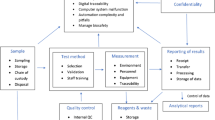An evaluation of resources required for the opportunity management (OM) of calibration laboratories is presented. In this study conducted at the Mendeleev All-Russian Institute for Metrology, a correlation is noted between methods for assessing risks associated with calibration laboratory activities and the topic of opportunity management. It is shown that risk identification methods play an important role in enhancing opportunities to achieve the laboratory’s purpose and objectives. Opportunity management involves the use of new approaches to the allocation of laboratory resources. This work considers OM approaches relying on the Pareto distribution and logistic curves. In addition, the prospects of using hyperbolic distributions in the management of resources required to introduce innovations are noted. It is recommended that risks and innovations be managed taking into account the characteristic parameters of hyperbolic distributions. The consideration of characteristic parameters is aimed at optimally combining frequently performed and new types of work. The novel described approach is shown to support the appropriate selection of solutions for managing opportunities and ensuring the sustainable development of calibration laboratories. This approach is applicable when improving secondary standards and working to higher level standards.

Similar content being viewed by others
References
I. Boldyrev, T. Selivanova, and V. Sheveleva, “Risk and opportunity management at a testing laboratory,” Kontr. Kach. Produk., No. 12, 4–12 (2018).
N. Zh. Shkaruba and M. V. Anchutkina, “Risk assessment system for the verification and calibration of measuring instruments at accredited laboratories,” Nauka bez Granits, No. 6(34), 78–82 (2019).
L. Wilkinson, “Revising the Pareto chart,” Amer. Statist., 60, No. 4, 332–334 (2006), https://doi.org/10.1198/000313006X152243.
K. H. Blanchard, T. Waghorn, and J. Ballard, Mission Possible: Becoming a World-Class Organization While There’s Still Time, McGraw-Hill, NY (1997).
V. A. Sednev and B. I. Kudrin, “Sustainable development of the economy and society,” Probl. Upravl. Risk. Tekhnosf., No. 1(45), 125–132 (2018).
B. Ya. Litvinov, M. V. Okrepilov, and R. V. Pavlov, “Measuring equipment management,” Kompetentnost, No. 4 (145), 21–25 (2017).
B. I. Kudrin, Three Presentations at a Joint Conference, Elektrika, Moscow (2002).
Author information
Authors and Affiliations
Corresponding authors
Additional information
Translated from Izmeritel’naya Tekhnika, No. 12, pp. 13–16, December, 2021.
Rights and permissions
About this article
Cite this article
Litvinov, B.Y., Okrepilov, M.V., Pavlov, R.V. et al. Calibration Laboratories: Risk Management and the Problem of Assessing Opportunities. Meas Tech 64, 954–957 (2022). https://doi.org/10.1007/s11018-022-02028-1
Received:
Accepted:
Published:
Issue Date:
DOI: https://doi.org/10.1007/s11018-022-02028-1



